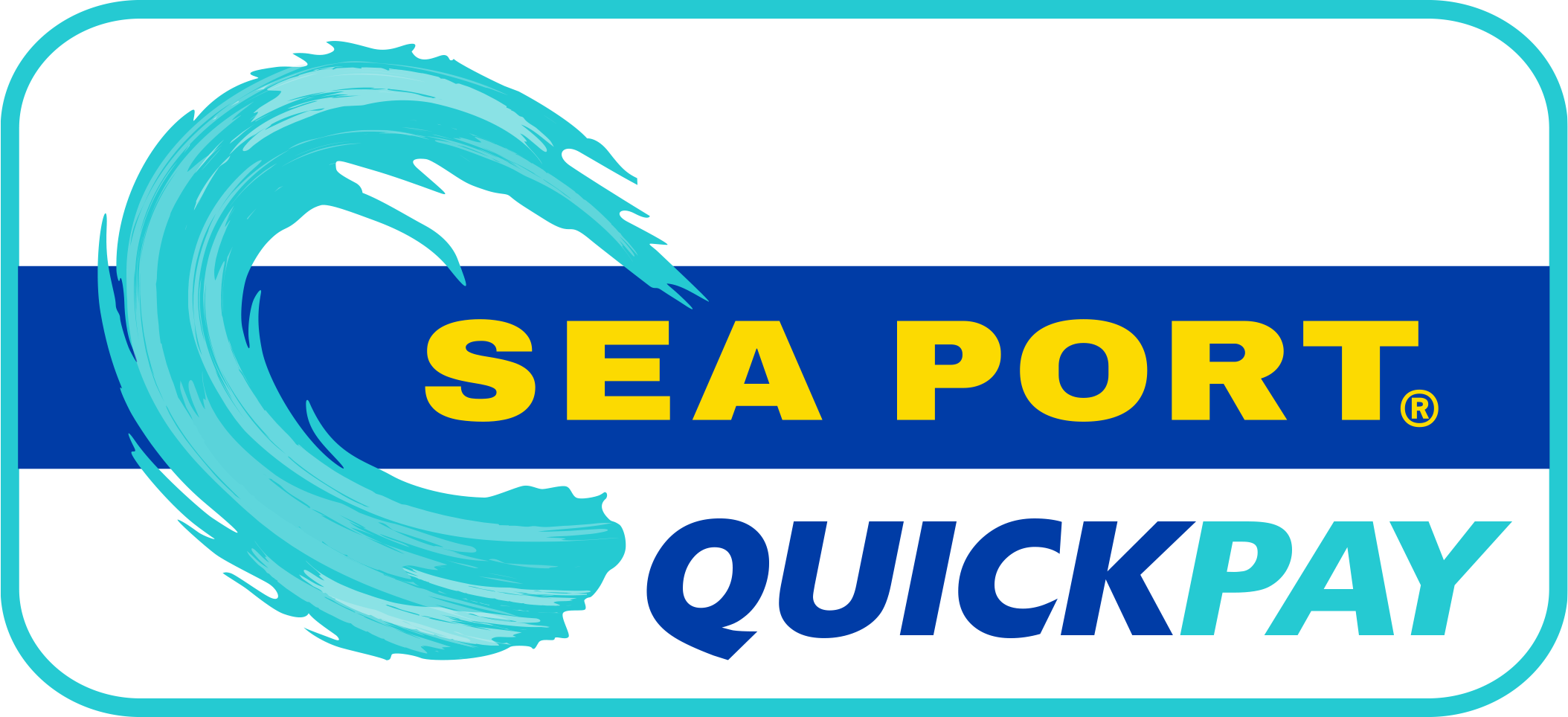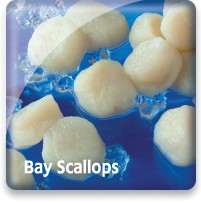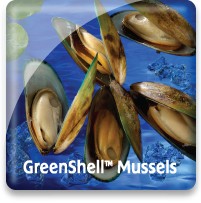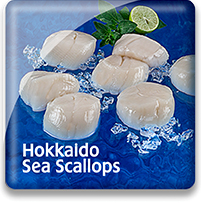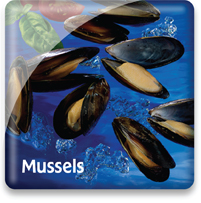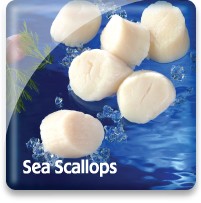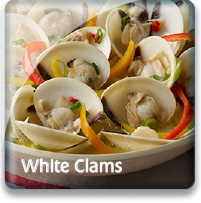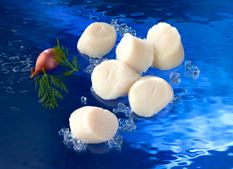
Hokkaido Sea Scallops

Market Name: Eating QualitiesSea Port offers two types of Hokkaido Scallops; those that are all natural with no chemicals or water added and those that have been treated with sodium tripolyphosphate to help retain moisture or add additional water to the scallop meat. Both are delicious to eat and exude that wonderfully unique scallop flavor. However, the all natural chemical free scallops have a slightly more intense scallop flavor and a firmer texture. Both types cook very quickly and care must be taken to not overcook them which compromises both their taste and texture.
Unlike other bivalves such as mussels and clams, scallops can swim by opening and closing their shells quickly.
|
Description & CharacteristicsThe Hokkaido Sea Scallop is a bivalve mollusk inhabiting the territorial waters of Japan in the Sea of Okhotsk and the Nemuro Straits off the northern island of Hokkaido. These Sea Scallops are filter feeders and have the fastest growth rate during the late spring and summer when plankton is naturally abundant.The average size at harvest when the scallop is 3-5 years old is approximately 5-7 inches in shell length. This produces the scallop meat adductor muscle that is approximately 10-30 count per pound. The Hokkaido Sea Scallop fishery is considered wild because the seeded beds are provided with no ongoing nutrition or confinement in the designated ocean beds. The seeding of one year old scallops to the bed areas in the Sea of Okhotsk is essential for maintaining the productivity of this wild fishery. There is currently work on building hatcheries for scallop seed because the natural collection of spat (seed) is dependent upon the natural spawning of the local scallops in the spring which can be unpredictable. Commercial harvesting is done overwhelmingly by dredging the beds, but harvesting by individual divers has gained a specialty following due to perceived harvest quality. The harvested scallops are transported immediately to nearby processing facilities to assure the highest quality. The Hokkaido Sea Scallop fishery is the largest in the world and these delicacies have become popular throughout Asia, Europe, and the United States. Sea Port sources IQF Hokkaido Sea Scallops (rather than block frozen) to add a higher level of convenience. Other Resources |
Handling Instructions for Hokkaido Sea Scallops
Frozen sea scallops should be stored at or below 0°F (-18°C) and then thawed properly when ready to cook. Our frozen sea scallops can be stored frozen for up to 18 months. Links to proper seafood handling instructions: NOAA - Fish Watch: Handling Seafood and A Consumer Guide to Safe Seafood Handling.
Thawing Hokkaido Sea Scallops
Our sea scallops should be thawed by removing them from their package and placing them in a sealed plastic bag or container and placed in the refrigerator (33 to 39°F) for 12 to 24 hours or until completely thawed. To speed up this thawing process, IQF sea scallops can also be placed in a colander and rinsed under cold water to remove any ice glazing and then placed in the refrigerator for proper thawing. Sea scallops should not be completely quick thawed in a colander under cold running water because their natural flavors have a tendency to be easily washed away. Sea scallops that are not consumed immediately after complete thawing need to be refrigerated between 33 and 39°F and consumed within 2-3 days.
Important Instructions for Hokkaido Sea Scallops
Upon complete thawing, gently remove the scallops from the milky colored natural scallop juices that have seeped from the scallops during thawing. This weeping of juices is perfectly normal. Sea scallops that are cooked immediately after thawing produce the best quality.
Cooking Tips
Raw sea scallops are quick and easy to cook in as little as 7-14 minutes by baking, steaming, boiling, broiling, barbecuing or pan frying. Sea scallops are delicate in texture and taste and should not be overcooked or they can become rubbery and lose flavor. Links to cooking tips and recipes: Seared Scallop Recipe and Scallop Selection and Storage.
Japan
Japan is an island nation that historically has had worldwide access to all the worlds fishing grounds to supply its seafood loving population who have the highest per capita seafood consumption of any developed nation. This access was severely curtailed in 1982 by the worldwide adoption of the UN Convention on the Law of the Sea that established 200 mile marine Exclusive Economic Zones for all nations with coastlines. In spite of this historical development, Japan today ranks fifth in world production of wild fisheries which comprises approximately 65% of their seafood production while aquaculture currently comprises the remaining 35% of their seafood production. Japan’s aquaculture production ranks 10th in the world and produces various shellfish, finfish, and seaweed. Japan consumes approximately 10% of the entire world’s wild caught fisheries which is comprised of a vast variety of finfish, crustaceans, and shellfish. Japan is also consuming an ever growing percentage of the world’s aquaculture production. They import much more seafood than they export, but the seafood they do export is generally considered to be high quality.
Go Blue! Seafood Sustainability Spectrum*Click here for an explanation of our Sustainability Spectrum

Sustainability AssessmentSea Port imports Hokkaido Sea Scallops from a fishery that is MSC certified as sustainable. In general, the environmental risks associated with the wild harvest of scallops revolves around bycatch and negative impacts to benthic ocean surfaces. The Hokkaido Sea Scallop fishery is well managed to mitigate these environmental concerns.
Environmental Impact: Low to ModerateHokkaido Sea Scallops are currently abundant, and the grow out beds are harvested only every 3-5 years and other areas are held in reserve to protect the natural breeding population. The Scallops are dredged, which disturbs the ocean floor, although the sandy bottom where scallops are found can recover more quickly than other types of habitat. Groundfish and sea turtles can be caught in scallop dredges, but management measures in place ensure that these interactions are reduced to low levels that do not negatively impact these populations.
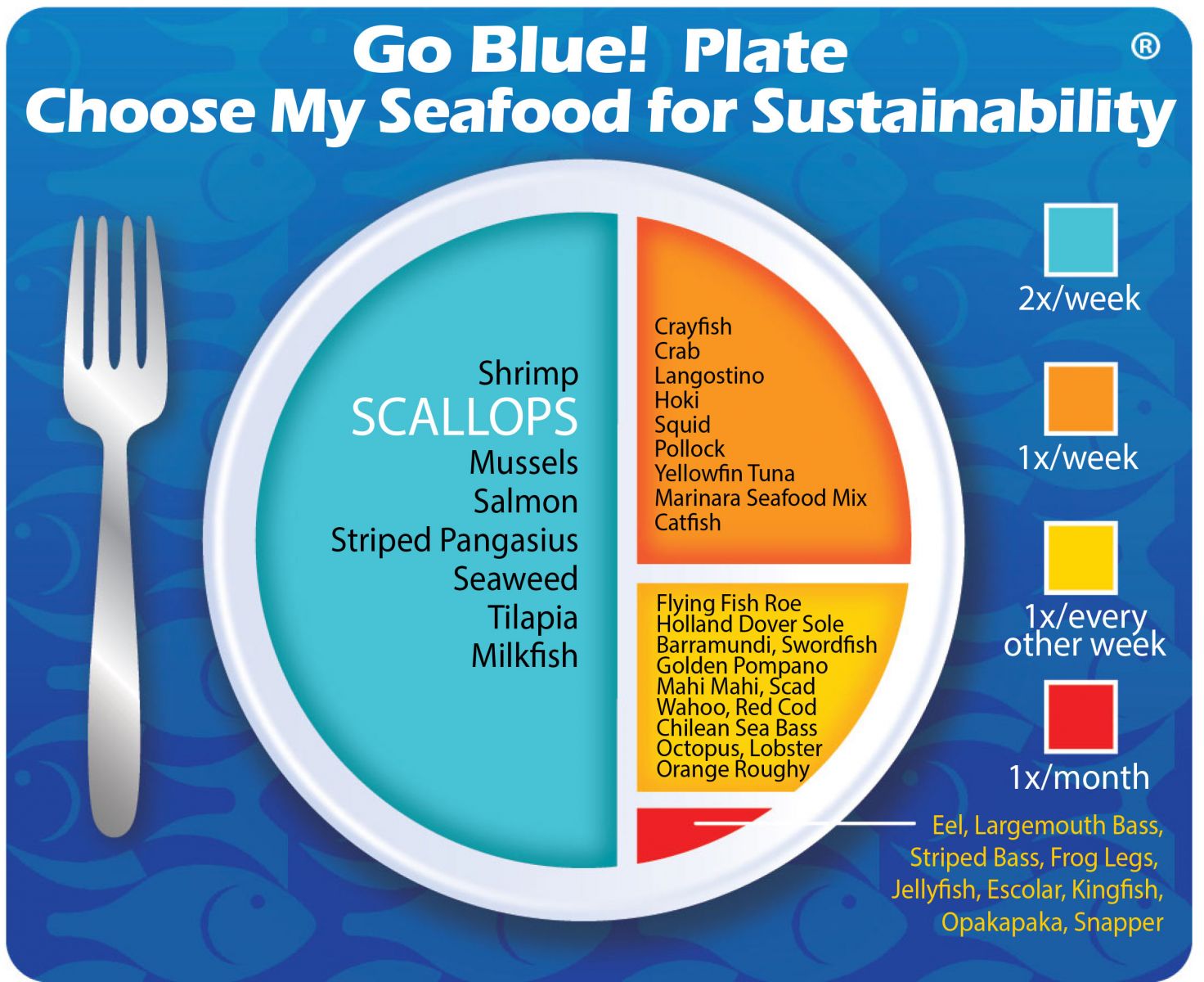
Sustainability Improvements NeededMonitoring of water quality and seed stocking densities are needed to further guard against possible habitat degradation.
Actions that Sea Port is UndertakingSea Port supports this fishery and by doing so will help advance the environmental sustainability of this well managed fishery. This well managed wild scallop fishery adds another sustainable and responsibly produced seafood to a growing variety of seafood choices that will help sustain the health of both humans and the planet’s ecosystems. Sea Port believes that, in aggregate, choosing from a diverse variety of seafood is better for sustaining the world’s seafood resources and that Hokkaido Sea Scallops should be a part of this variety. We created the sustainability assessments for each of our seafood items in order to reveal the existing and potential environmental impacts and risks that are associated with producing them for human consumption. This allowed us to establish the starting position for each of our seafood items along our progressive Go Blue! Seafood Sustainability Spectrum®. These assessments are only a single snapshot in time and because of this, we will continue to assess and update the critical sustainability needs associated with our supply sources and issue updates to the Go Blue! Seafood Sustainability Spectrum® as needed. There is a growing global awareness for the need to assure the sustainability of farmed and wild caught seafood and because of this; all around the world positive changes are rapidly occurring at all levels of the seafood supply chain. We will continue to spread this growing awareness and work with our many industry partners to improve the sustainability of all seafood, which we believe is the ideal protein of choice to feed an ever growing world population. Our Go Blue! Seafood Sustainability Spectrum® serves as our compass and yardstick as we strive to move all our products forward to becoming more sustainable. Please join us in this committed quest and Catch Our Wave® to sustainability by choosing a diverse variety of responsibly produced seafood as part of your diet.
|

